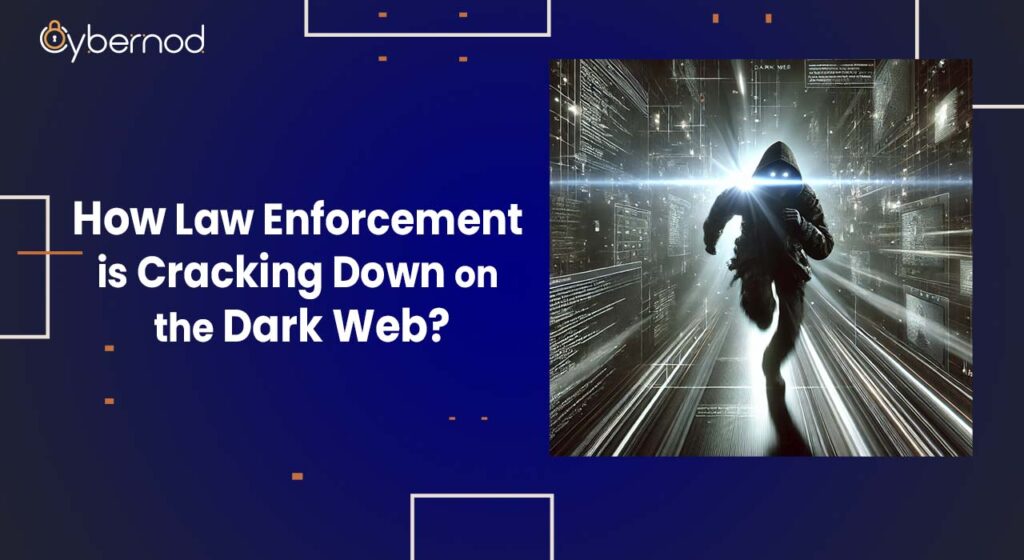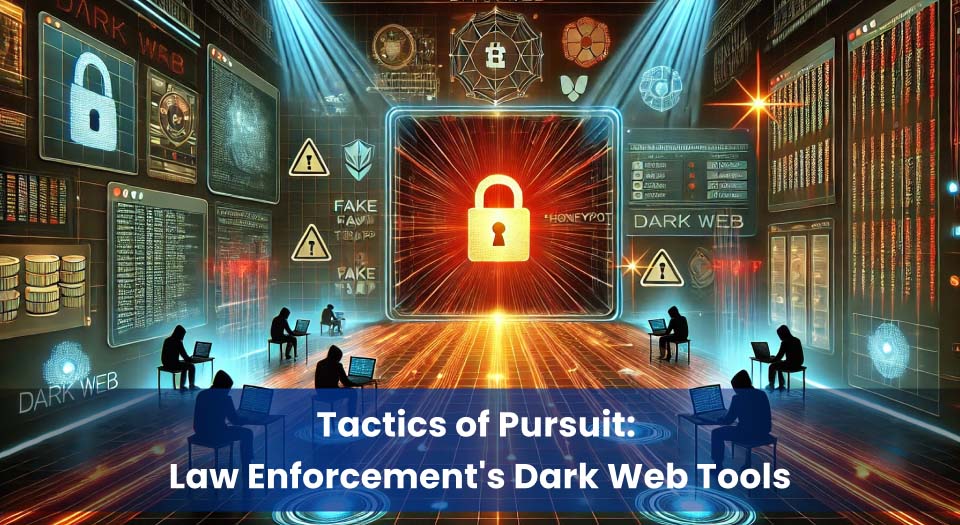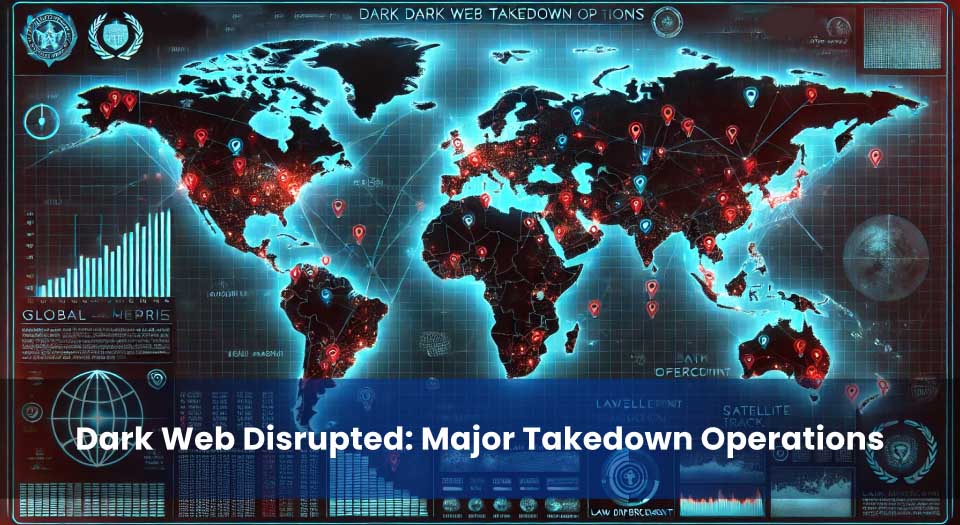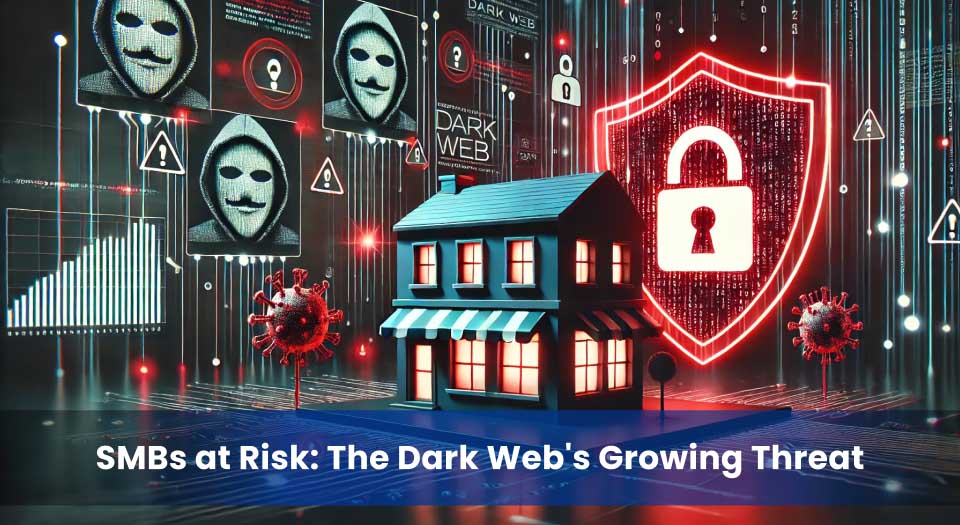
The dark web, a concealed portion of the internet not indexed by traditional search engines, has evolved into a hub for illicit activities—including data breaches, identity theft, and the trade of stolen business credentials. Unlike the surface web, which hosts public websites, and the deep web, which contains private databases and internal systems, the dark web is accessible only through specialised browsers like Tor. While originally designed to support anonymity and privacy, it has become increasingly exploited by cybercriminals.
For small and medium-sized businesses (SMBs), the dark web represents a persistent threat. Compromised employee credentials, leaked customer information, and exposed intellectual property often find their way into dark web marketplaces. These exposures can lead to severe financial and reputational consequences if left undetected. Consequently, cybersecurity for businesses—particularly SMBs—must now account for dark web monitoring and risk mitigation strategies as part of a broader security posture.
In response to these growing risks, law enforcement agencies worldwide are intensifying efforts to dismantle dark web networks. Through collaborative operations and advanced digital forensics, organisations such as the FBI and Europol are making tangible progress in cracking down on these hidden criminal ecosystems.
Layers of the Internet
Understanding the Dark Web’s Role in Cybercrime
The dark web has become a central marketplace for criminal activities involving stolen credentials, malware, counterfeit documents, and unauthorised access to corporate systems. These hidden platforms operate using anonymised networks like Tor, allowing sellers and buyers to transact with minimal traceability. Transactions are typically conducted using cryptocurrencies to obscure financial trails, making enforcement and attribution significantly more complex.
For businesses—especially small and medium-sized enterprises—these marketplaces pose serious risks. Leaked employee credentials, customer data, and proprietary information can be sold or traded, leading to unauthorised system access, data breaches, and financial loss. Conducting a thorough cybersecurity risk assessment is essential to detect these exposures before they escalate into full-scale incidents.
As Europol outlines in its Dark Web Monitoring Report, law enforcement agencies increasingly employ digital surveillance and blockchain analysis to identify individuals behind these platforms. The FBI’s Operation Disruptor further demonstrates how coordinated global action can dismantle dark web infrastructure, even when it spans multiple jurisdictions.
Understanding how these illegal marketplaces function provides essential context for businesses aiming to reduce exposure to the top cybersecurity threats small businesses face—especially those that originate from the dark web.
How Business Data Ends Up in Dark Web Marketplaces
Key Law Enforcement Tactics and Techniques

Modern law enforcement agencies have developed a sophisticated arsenal of tools and strategies to identify and dismantle dark web operations. Combining digital forensics with traditional investigative methods, agencies such as the FBI and Europol are increasingly successful in penetrating anonymous networks and disrupting criminal marketplaces. These operations are often the result of months, if not years, of coordinated efforts.
One effective tactic is the deployment of honeypots—fake marketplaces or vendor accounts created by investigators to monitor illegal transactions and gather intelligence on user behaviour. Additionally, blockchain analysis plays a critical role in tracing cryptocurrency transactions. Despite attempts to anonymise payments, patterns in blockchain records often expose identities or lead to physical evidence when linked with exchanges or IP logs.
Operations such as Operation Dark HuntTOR and Operation Disruptor exemplify this integrated approach, where technical expertise and human intelligence are combined to execute global takedowns across multiple jurisdictions.
Dark Web Investigation Workflow
As like blockchain analysis to track criminal activities, it’s crucial to understand the broader cybersecurity landscape of blockchain technology. While penetration testing is a foundational security measure, it alone is insufficient to protect these decentralized systems. To delve deeper into the advanced cybersecurity strategies necessary for blockchain security, read our article:”Beyond Penetration Testing: How Cybersecurity Powers Blockchain Security“.
Major Operations and Their Impact

In recent years, international law enforcement agencies have executed several significant operations to dismantle major dark web marketplaces. These actions have disrupted illicit online activities and provided valuable insights into enhancing cybersecurity measures for businesses.
1. AlphaBay Takedown (2017)
In July 2017, AlphaBay, the largest dark web marketplace at the time, was seized and shut down through a coordinated effort led by the FBI, DEA, and international partners. AlphaBay facilitated the sale of illegal drugs, stolen identification documents, counterfeit goods, malware, and other illicit items. The operation resulted in the arrest of key figures and the seizure of significant assets. Federal Bureau of Investigation+1Justice.gov+1
2. Hansa Market Shutdown (2017)
Concurrently with the AlphaBay operation, Dutch law enforcement, with support from Europol, took control of Hansa Market, another prominent dark web marketplace. Authorities operated the platform covertly for several weeks, gathering intelligence on users before shutting it down. Federal Bureau of Investigation
3. Wall Street Market Closure (2019)
In May 2019, the Wall Street Market, considered the world’s second-largest illegal online market, was dismantled by German authorities with assistance from Europol and other international agencies. The marketplace was notorious for trading in stolen data, counterfeit goods, and malicious software. The Hacker News+2BankInfoSecurity+2Europol+2
4. DarkMarket Takedown (2021)
In May 2019, the Wall Street Market, considered the world’s second-largest illegal online market, was dismantled by German authorities with assistance from Europol and other international agencies. The marketplace was notorious for trading in stolen data, counterfeit goods, and malicious software. The Hacker News+2BankInfoSecurity+2Europol+2
In January 2021, DarkMarket, believed to be the largest illegal marketplace on the dark web, was taken offline in an operation led by German law enforcement and supported by Europol. The marketplace had nearly 500,000 users and facilitated the sale of drugs, counterfeit money, stolen credit card data, and malware. PortSwigger
| Marketplace | Year | Lead Agencies | Users | Illicit Goods |
|---|---|---|---|---|
| AlphaBay | 2017 | FBI, DEA, Europol | Over 200,000 | Drugs, stolen IDs, malware |
| Hansa Market | 2017 | Dutch Police, Europol | Unknown | Drugs, counterfeit goods |
| Wall Street Market | 2019 | German Police, Europol | Over 1,000,000 | Stolen data, malware |
| DarkMarket | 2021 | German Police, Europol | Nearly 500,000 | Drugs, stolen credit card data |
Implications for Small and Medium-Sized Businesses

The widespread availability of stolen credentials, intellectual property, and sensitive customer information on dark web marketplaces has created an urgent need for small and medium-sized businesses (SMBs) to strengthen their cybersecurity posture. While much of the attention often centres on large enterprises, SMBs are increasingly targeted due to their typically weaker security frameworks and limited internal resources. In many cases, they serve as entry points into larger supply chains, making them attractive to cybercriminals.
When employee login details or client databases are exposed on the dark web, the consequences can be severe: financial theft, reputational damage, operational disruption, and legal liability. Without early detection, these incidents can remain unnoticed for months, giving threat actors ample time to exploit the stolen assets. Businesses must adopt a proactive defence model—one that does not wait for breaches to happen but continuously evaluates and strengthens its defences.
Implementing a regular cybersecurity risk assessment enables companies to identify vulnerabilities before they are exploited. This should be complemented by a thorough security gap analysis, which compares current security controls against industry standards and best practices to uncover any deficiencies.
To access the best cybersecurity for small business, organisations should consider partnering with providers that offer tailored cybersecurity services for small business, including dark web monitoring, employee phishing simulations, and endpoint protection. These targeted services not only safeguard digital assets but also help businesses comply with evolving regulatory requirements and build customer trust through responsible data stewardship.
Cybersecurity Risk Lifecycle for Small Businesses
Proactive Measures: What Businesses Can Do
For small and medium-sized enterprises (SMEs), a reactive approach to cybersecurity is no longer sufficient. Proactive risk management is essential to reduce exposure to dark web threats and maintain long-term business resilience. By implementing structured, cost-effective strategies, businesses can significantly reduce the likelihood of data breaches and unauthorised access.
The first essential step is to conduct regular vulnerability assessments and security gap analysis. These evaluations help identify weak points across systems, networks, and user access protocols. Without this foundation, organisations may remain unaware of existing risks until after an incident occurs.
Secondly, dark web monitoring tools can play a crucial role in detecting exposed credentials, leaked customer data, or mentions of company assets in underground forums. Early detection enables businesses to act before sensitive information is exploited.
Thirdly, partnering with professionals who specialise in cybersecurity services tailored to small businesses allows companies to scale their protection efforts without the need for large internal security teams. To choose the best cybersecurity solution for a small business, look for providers that offer automated assessments, 24/7 monitoring, and compliance support.
Platforms such as Cybernod offer accessible and affordable tools designed for SMEs, including dark web exposure scans, vulnerability assessments, and compliance readiness reports.
Additionally, leveraging free cybersecurity resources for small businesses, such as government frameworks and awareness training, adds another layer of protection at minimal cost.
Cybersecurity Risk Management Cycle
Legal and Regulatory Considerations
Staying compliant with data protection and cybersecurity regulations is not only a legal obligation but also a vital component of building trust with customers and protecting business continuity. Small and medium-sized businesses must ensure that their cybersecurity practices align with regional and international regulatory frameworks to reduce exposure to penalties and reputational damage.
In Australia, the Australian Cyber Security Centre (ACSC) provides comprehensive guidance on securing business infrastructure and complying with national laws such as the Privacy Act 1988 and the Notifiable Data Breaches Scheme. Businesses are encouraged to adopt the Essential Eight mitigation strategies as a baseline for defence.
For businesses operating in the European Union or handling EU data, GDPR compliance remains critical. It mandates strict rules on personal data processing and reporting breaches. Similarly, the NIS2 Directive strengthens cybersecurity requirements across essential and digital service providers.
To comply with cybersecurity regulations, small businesses should implement regular audits, maintain accurate records, and appoint a data protection officer where applicable.
| Regulation / Framework | Region | Focus | Compliance Tip |
|---|---|---|---|
| GDPR | EU / Global | Data privacy and breach reporting | Limit data collection and document processing policies |
| Privacy Act & NDB Scheme | Australia | Personal data protection | Report eligible breaches within 30 days |
| NIS2 Directive | EU | Cybersecurity for essential services | Apply layered defence and incident reporting |
| UAE Cybersecurity Strategy | UAE | National cyber resilience | Align policies with UAE Cyber Security Council directives |
Strengthening Your Defence Before the Next Threat Strikes
Recent law enforcement successes against dark web marketplaces offer a valuable reminder: cybercriminals are being tracked, but the threat to businesses remains. While agencies dismantle major platforms, the responsibility to protect internal systems and data still falls on each organisation. For small businesses especially, a single exposure can lead to severe financial and operational consequences.
Proactive engagement with cybersecurity practices—such as conducting regular security gap assessments, monitoring for dark web exposure, and investing in professional services—is essential for risk mitigation. This is not merely a technical priority but a strategic imperative for business survival and trust.
At Cybernod, we provide cybersecurity for small businesses through automated assessments, exposure reports, and expert insights tailored to your organisation’s needs.
Categorized in: